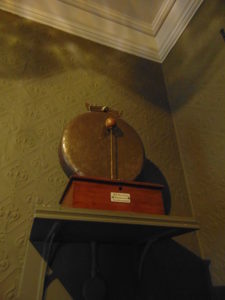One of the key project outputs I’m currently working on is an interactive resource for upper Key Stage 2 pupils (years 5 and 6, age 9-11 years) that tells the story of the electrification of each of the three houses together. This will be hosted on the MyLearning website, a repository for a variety of teaching resources developed by museums and other heritage organisations; please pay them a visit to have a look at other examples of interactive school resources hosted on their site.
Designing this resource is a challenging process because there’s so much involved that needs to be kept in mind. At the centre will be material from Graeme and Abigail’s research, but in order to apply this effectively it’s important to emphasise themes to which school pupils will be able to relate, and which also mesh well with the aims and objectives of the national curriculum guidelines both for history and for science. The interactive needs to draw out common themes from the histories of the three houses, Cragside, Lotherton Hall and Standen, but also must highlight what makes them individual and special.

Something we’re really keen to promote in this project is that country houses were in the past – and often still are – important sites for technical innovation, and as such can be used as venues for teaching science and technology topics, for example electricity (obviously), but also energy self-sufficiency and sustainability (as I mentioned in a previous blog post). Whereas school groups are more likely to visit country houses to support history and art teaching, this interactive could encourage teachers to consider bringing pupils to a local country house for a trip to tie in with teaching about science and technology.
As demands on teachers’ time are many and varied, this interactive will provide an opportunity to investigate the potential of country houses for this in the classroom both before and after the visit. Even if a visit is not possible, the resource can still enable teachers and pupils to consider the scientific and technological heritage embodied in country houses. We’re hoping for example that teachers might be able to use this resource when putting together the local history study which is now a compulsory part of the new history curriculum.
I’ll write again soon about the specific elements we intend to include within this resource. I’m also going to put together a focus group of teachers to consult with in order to discuss the content and structure of this resource and make sure it will be useful in the classroom. If you’re a primary teacher, do you think you’d run a visit to a country house to teach about science and technology as well as art and history?